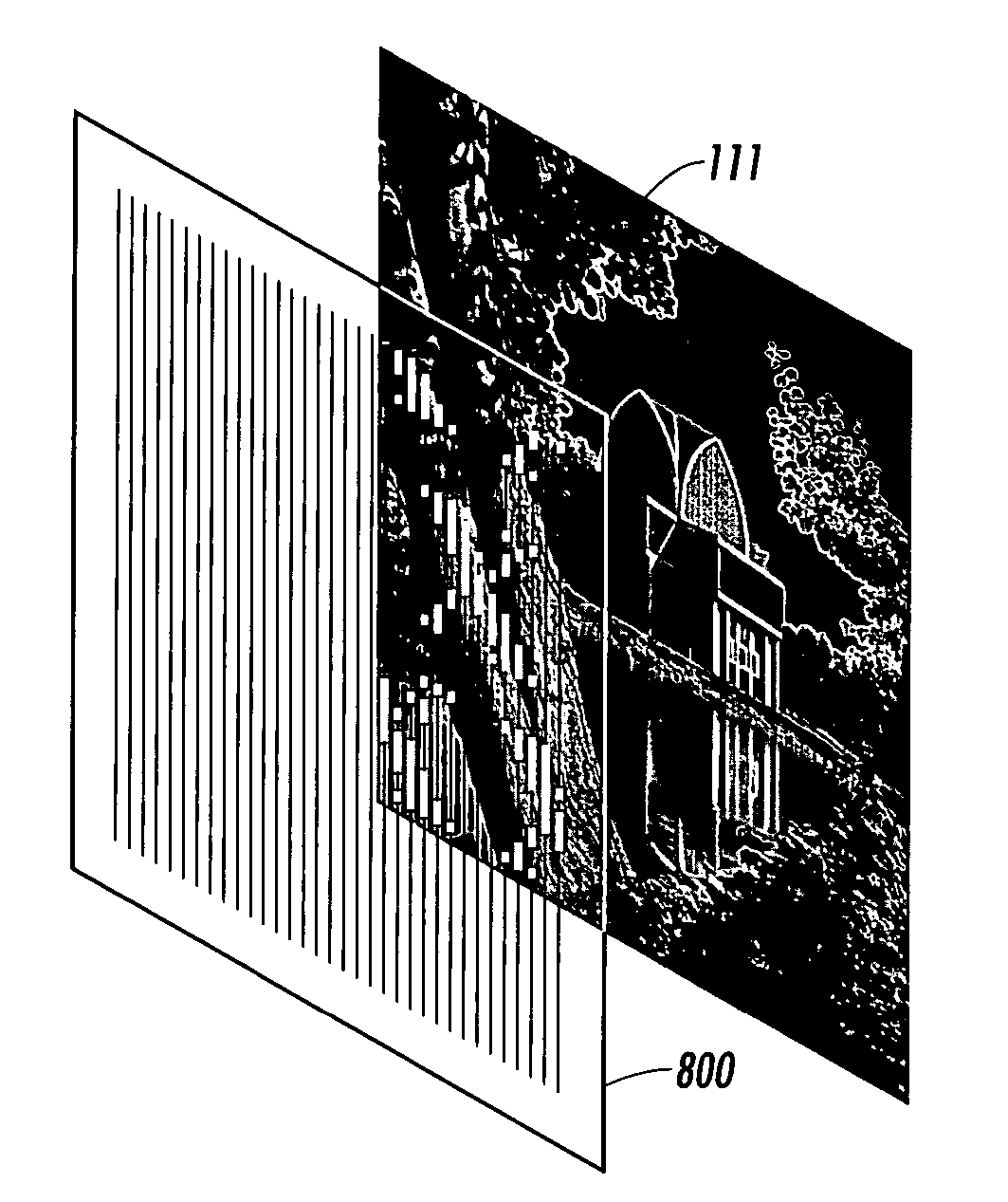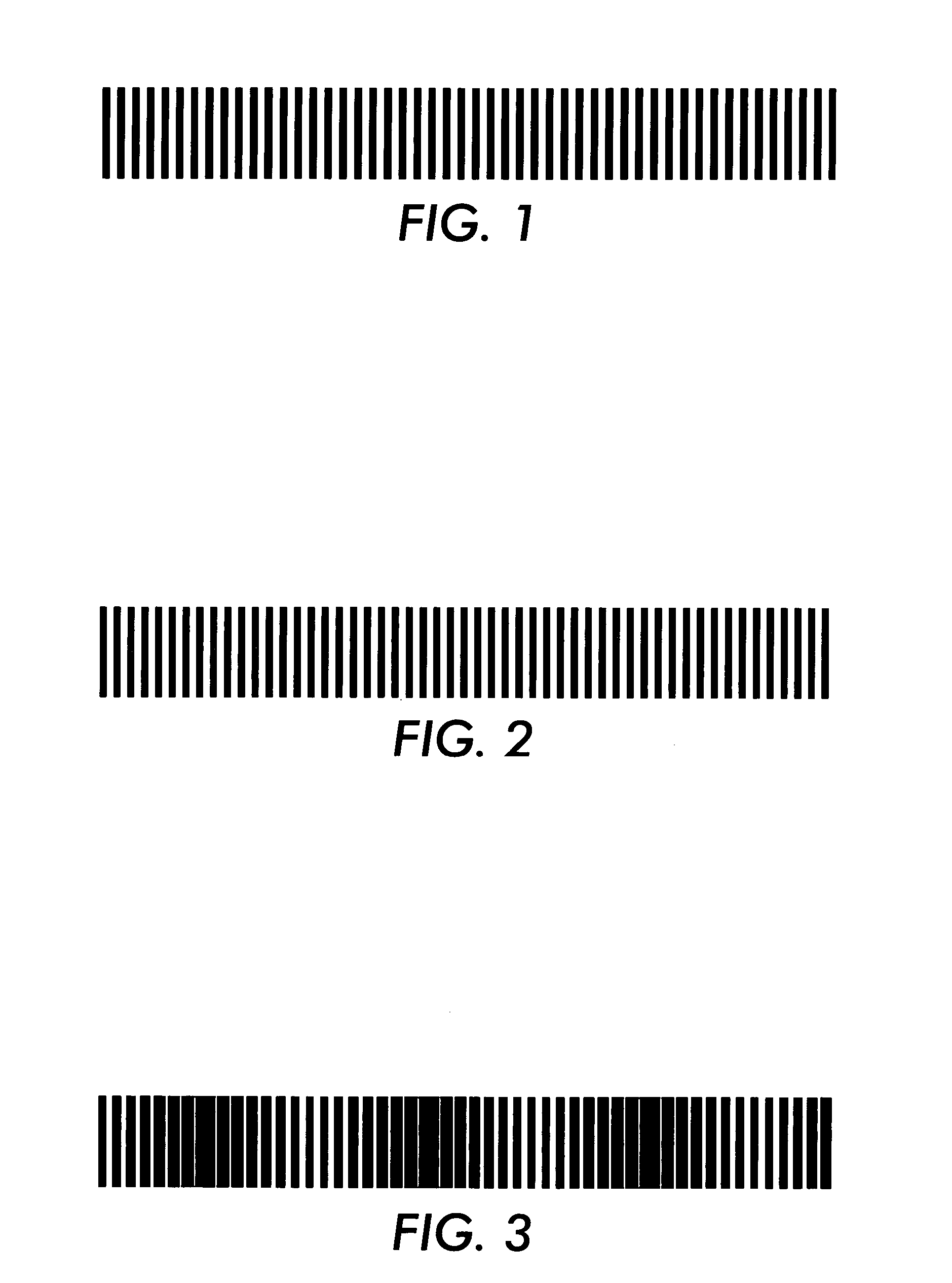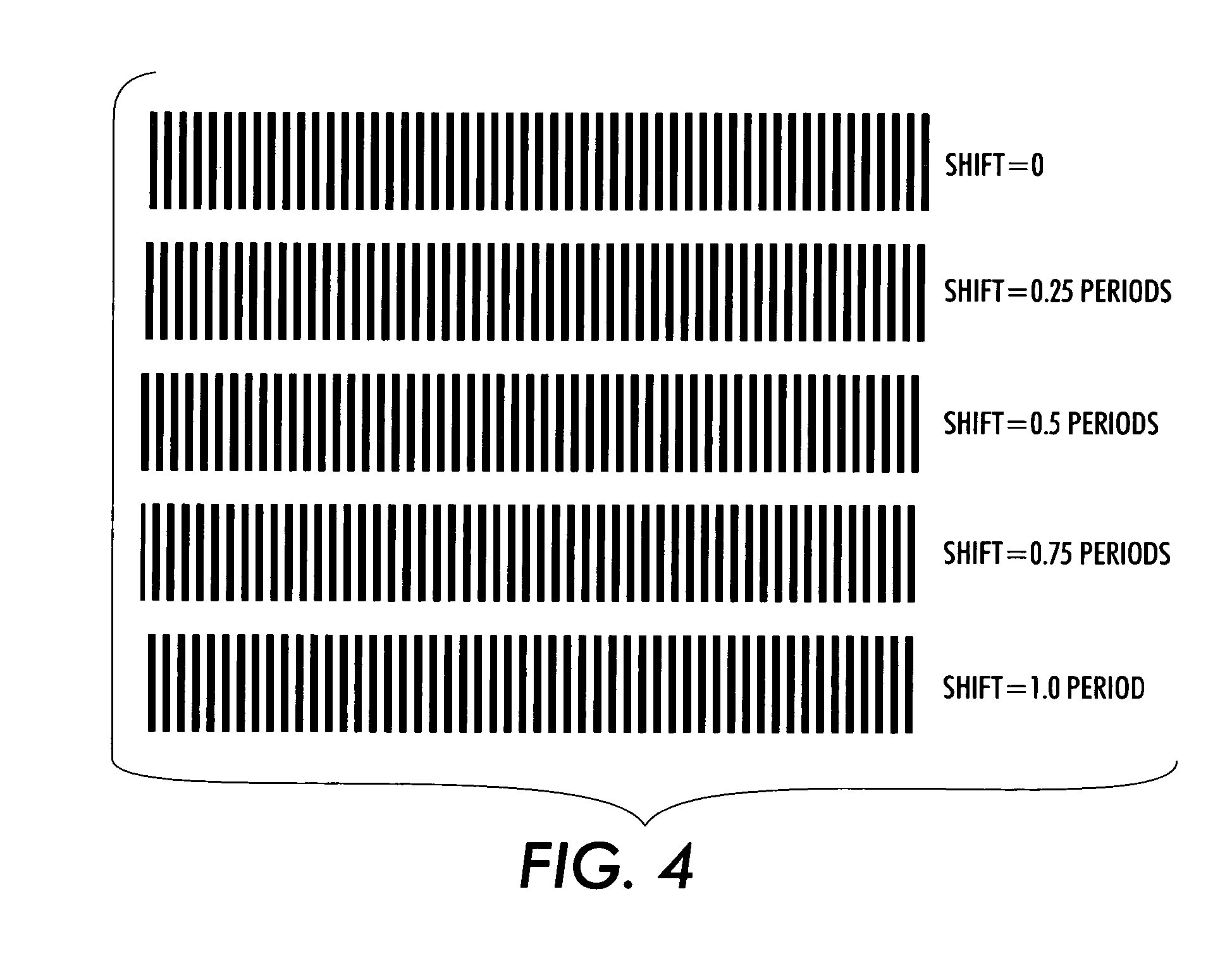Moiré-based auto-stereoscopic watermarks
a moire-based, auto-stereoscopic technology, applied in the field of stereo images, can solve the problems of lenticular lenses, incurring additional expense and complexity, difficult and uncomfortable to see hidden stereo images, etc., and achieves the effect of simple overlay, quick and easy to see, and simple and quick
- Summary
- Abstract
- Description
- Claims
- Application Information
AI Technical Summary
Benefits of technology
Problems solved by technology
Method used
Image
Examples
Embodiment Construction
[0021]A methodology is herein taught using duplex printing on transparencies to create auto-stereoscopic images viewed in a “see-through” manner. By choosing different halftone structures for each of the two sides of a transparency, a moiré pattern resulting due to halftone overlapping can be observed. When the transparency is viewed at different angles (as is inherent with the distance from the left eye to the right eye of an individual observer), a very small lateral shift occurs between the front-side and the back-side prints due to the thickness of the transparency and would not be otherwise normally noticeable. However, the corresponding resulting moiré shift can be much greater than the above-mentioned lateral shift and can also be in a different direction. As a result, the moiré result is apparently visually perceived as located in the space in front of or behind the transparency. For example, using an ordinary transparency with an approximately 100 micron thickness as is typ...
PUM
 Login to View More
Login to View More Abstract
Description
Claims
Application Information
 Login to View More
Login to View More - R&D
- Intellectual Property
- Life Sciences
- Materials
- Tech Scout
- Unparalleled Data Quality
- Higher Quality Content
- 60% Fewer Hallucinations
Browse by: Latest US Patents, China's latest patents, Technical Efficacy Thesaurus, Application Domain, Technology Topic, Popular Technical Reports.
© 2025 PatSnap. All rights reserved.Legal|Privacy policy|Modern Slavery Act Transparency Statement|Sitemap|About US| Contact US: help@patsnap.com



